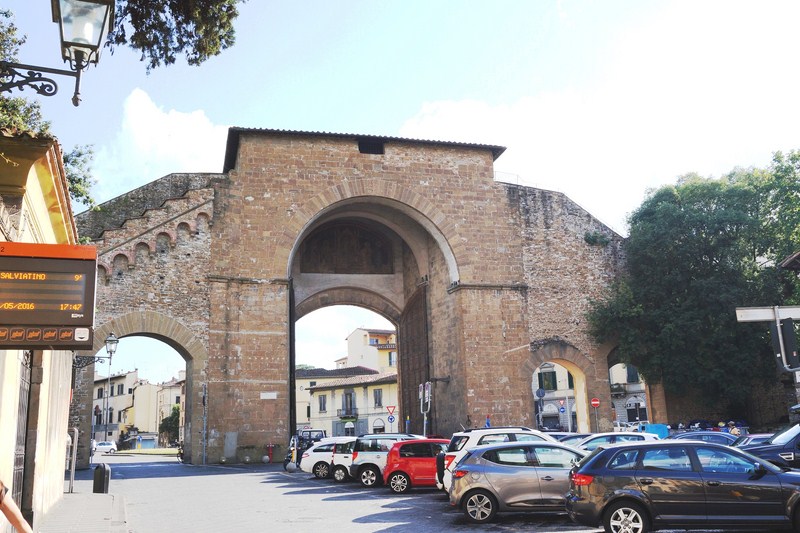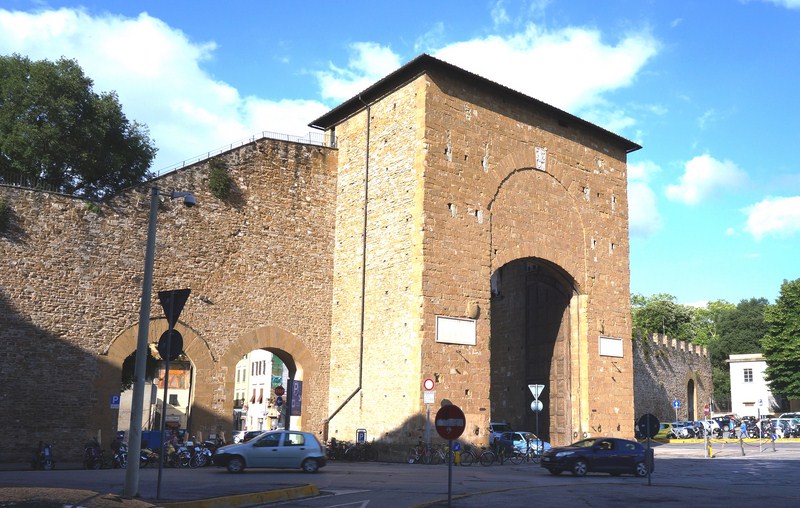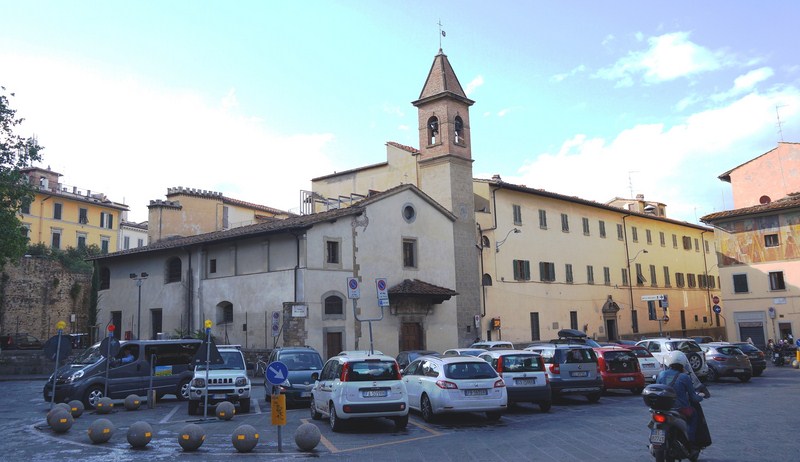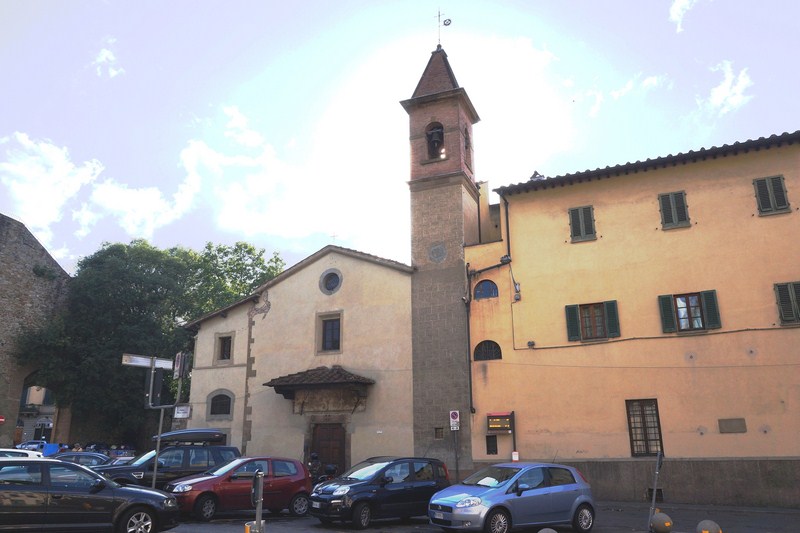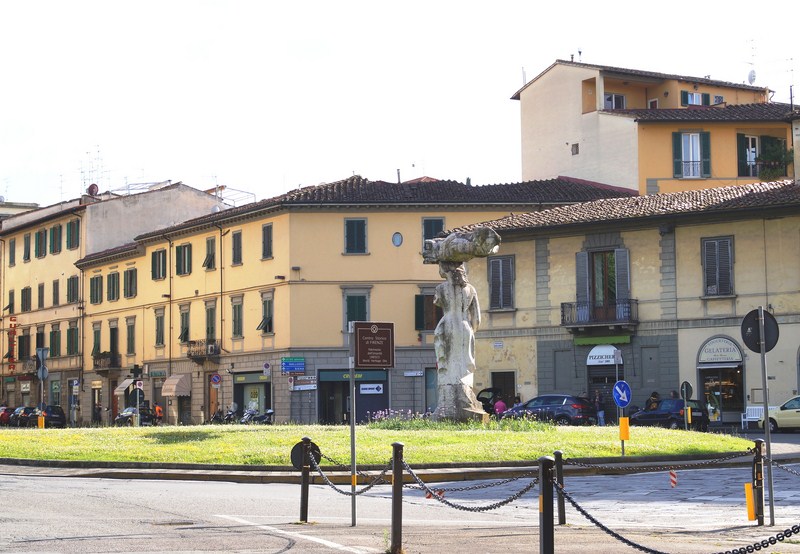The Porta Romana (also known as the Porta San Pier Gattolino), the southernmost gate (with a snippet of merlonated wall) in the 13th-century walls of the Oltrarno section of Florence, stands at the confluence of a number of roads. From the north, it is accessed by Via Romana, Via de’ Serragli, and Viale Francesco Petrarca while a central road, along the Boboli Gardens, begins near the gate and allows the inhabitants of the Pitti Palace to exit and enter Florence with minimal travel on city streets.
Beyond the gates are the Via del Poggio Imperiale and Via Senese (which leads to Siena and points south such as Rome, hence the name). The 13th century walls and gates of the city were erected with the designs of various builders including Arnolfo di Cambio (among the main contributors), with contributions by Orcagna, Giotto and others. In the 19th century, the majority of the defensive walls of Florence were razed and only a few, and sometimes partial, gate structures were left standing including Porta San Gallo, the Tower of San Niccolò, and this gate.
According to a plaque on the external wall, the gate was erected in 1327, during construction of the last set of walls. Originally (and as demonstrated on the 1584 Map by Stefano Buonsignori), the gate had a lower outer wall with a small courtyard dominated by the larger gate we see today.
Resembling the Porta Romana of Siena, the gate, the largest and best preserved of the ancient gates and walls of Florence, had a large central entrance (which retains its original massive, iron-clad doors with their old locks and typical large bolts for decorative and pragmatic purposes) for horse-drawn carriages plus smaller lateral doors for pedestrian entry.
A weather-worn 13th-century fresco, depicting the enthroned Virgin and saints, is found at the outer arch while the interior portion of the gate has two marble plaques – one commemorating the 1515 entrance of the Medici Pope Leo X into Florence and, the other, the 1535 entry of Charles V, Holy Roman Emperor. The gate also has a marble slab bearing the Medici coat of arms.
When Cosimo I augmented the walls around Florence, he destroyed the Church of San Pier Gattolino that had stood at the gate site since at least 1068. The subsequent rebuilt church (also called the Parish Church of Serumido, derived from the name of Ser Umido di Domenico Grazzini, who helped to fund its rebuilding), decorated by Giusto Mariani and Romanelli, was restored in 1808, with frescoes of Giuseppe Castagnoli and Domenico Del Podestà added.
The 14th-century church and convent of San Giusto della Calza of the Knights of Jerusalem is just outside the wall. In the center of a roundabout before the wall is a controversial modern marble statue, erected by the Italian painter, action and object artist, and art theorist Michelangelo Pistoletto, of two women named “Dietro-Front” (“Turnabout”).
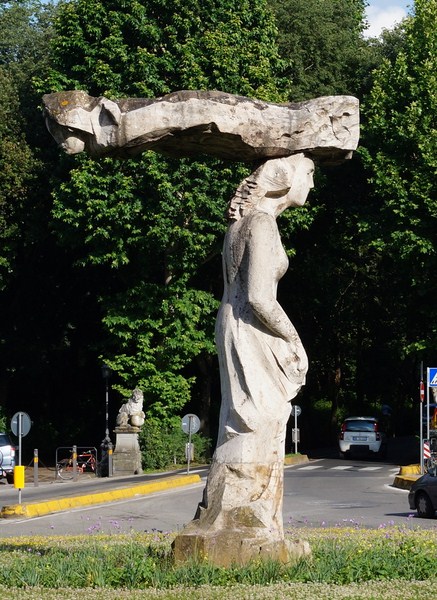
Dietrofront of Michelangelo Pistoletto. Standing 6 m. tall and 4 m. wide, the sculpture consists of two figures, one vertical and one horizontal, the latter’s head resting on top of the former in a precariously unbalanced position (it is held securely in place by an internal metal structure).
Presented for the first time in 1984 at the artist’s exhibition at Forte Belvedere, the sculpture was, later, permanently placed in Piazzale di Porta Romana. Well-integrated into the city, it is now considered an iconic reference to the area of Porta Romana.
Porta Romana: Piazzale di Porta Romana, 50125 Florence, Italy

